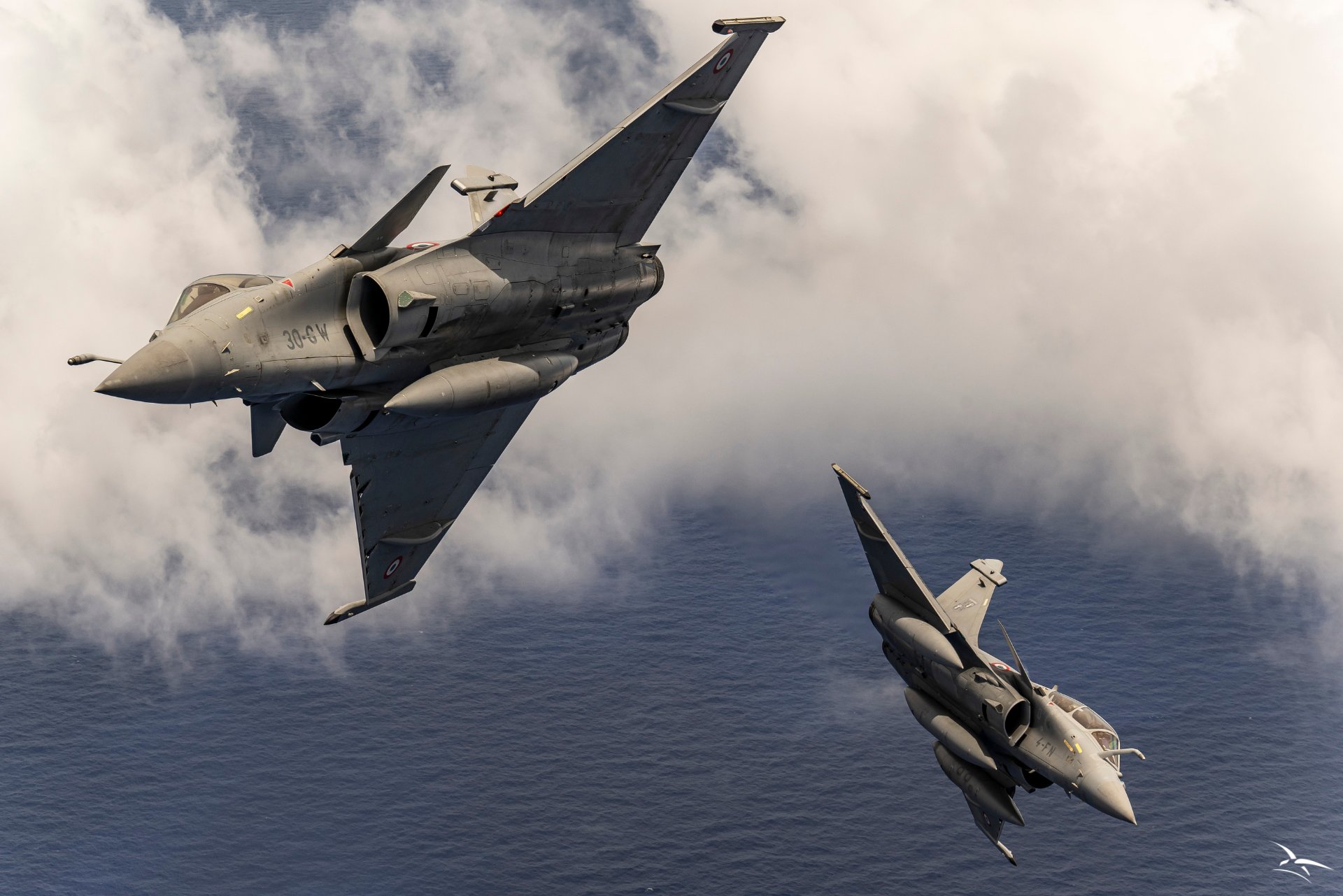France has awarded a contract to Dassault Aviation for producing 42 Rafale fighter jets, valued at over €5 billion (US$5.5 billion), through a tranche-5 order.
The agreement, granted by France’s DGA defense procurement agency, outlines the delivery schedule of the Rafale jets between 2027 and 2032.
The 42 single-seat aircraft will initially adhere to the Standard-4 configuration but possess the capability for future upgrades to Standard-5.
This upgrade, anticipated in the mid-2030s, aims to facilitate collaborative combat with remotely piloted aircraft, as highlighted by the French procurement agency DGA.
Dassault initiated the development of Standard-4, emphasizing improved connectivity, in 2018. The first phase received qualification from DGA in March 2023.
Une nouvelle étape décisive est franchie avec la commande de 42 Rafale pour l'@Armee_de_lair !
C’est une excellente nouvelle pour notre souveraineté, notre sécurité et pour nos armées, qui bénéficieront de Rafale supplémentaires aux capacités opérationnelles modernisées. pic.twitter.com/i0FGaFxJcO
— Sébastien Lecornu (@SebLecornu) January 12, 2024
While the order for the 42 planes was placed in December, the official announcement came on January 12. Yet, this revelation aligns with expectations, having been documented and factored into the 2023 budget.
Notably, 12 of the ordered aircraft will replace those transferred to Croatia by the French government in November 2021.
The latest deal marks the fifth tranche of jets in France’s Rafale program, resulting in 234 aircraft. The breakdown includes 13 in 1993, 48 in 1999, 59 in 2004, 60 in 2009, and a further augmentation of 42 in 2023.
In 2021, France placed a “special order” for 12 Rafale fighters to replenish the fleet after transferring 12 aircraft to Greece.
Armed Forces Minister Sébastien Lecornu said that adding these modernized Rafales enhances national sovereignty and security.
Dassault Aviation’s CEO, Eric Trappier, highlighted the company’s readiness to contribute as the prime contractor and complex systems integrator, highlighting the unique military-industrial sovereignty in Europe.
Meanwhile, the implementation of standard 4 brings various enhancements, per the French Ministry of Armed Forces.
Notable improvements included the RBE2 AESA radar’s Ground Moving Target Indicator (GMTI) for 3D tracking ground targets, an advanced aircraft-to-missile communication system, and an extended detection and jamming capability for the SPECTRA self-protection system.
The Rafale will also be equipped to carry up to three 1,000-kilogram AASM air-to-ground missiles.
Additional features comprise a helmet-mounted display system, enhanced cockpit displays, new optronics for detecting stealthy targets, integration of the CONTACT tactical radio, and improved protection against cyberattacks.
Soaring High In The Global Market Skies
Dassault Aviation has affirmed that the existing Rafale orders and the new contract will keep the jet’s production line active for the next ten years.
Introduced into service with the French Navy in 2004 and the French Air Force in 2006, the Rafale has demonstrated its prowess in various theaters of operation, including Afghanistan, Libya, Mali, Iraq, and Syria.
With the recent contract, France’s total Rafale orders have reached 234.
Trappier emphasized that the Rafale goes beyond its role as a military asset, extending its influence to diplomacy and economic strength in the export trade.
On the international front, export orders for the Rafale currently stand at 261 new aircraft, with customers such as Egypt, India, the United Arab Emirates, and Indonesia.
In the last few years, the Rafale program has seen widespread international adoption, with various countries strengthening their air capabilities by acquiring these advanced fighter jets.

Egypt has acquired 55 Rafale aircraft, while Qatar and India each boast a fleet of 36. Greece has augmented its air force with 12 Rafale jets, and the United Arab Emirates has secured a deal to acquire 80 units of this advanced fighter jet.
Indonesia has also inked a deal to acquire 42 high-performance aircraft to bolster its Air Force inventory. Besides that, both Greece and Croatia have purchased a dozen Rafale jets from the French Air Force.
According to the manufacturer, in 2023, it received orders for 60 Rafales, comprising 42 for France and 18 for Indonesia. This figure represents a decrease from the 92 export orders recorded in 2022.
Furthermore, in 2023, the company fell slightly short of its target, delivering 13 aircraft instead of the aimed 15—resulting in one less fighter than the total of 2022.
As of the end of December, the company’s backlog for the Rafale has grown to 211, with 141 designated for export. This marks a significant increase from the backlog figure of 164 at the close of 2022.
Meanwhile, the latest agreement, constituting the first significant expenditure under France’s 2024-2030 military budget law, is anticipated to impact the workforce substantially.
According to statements from the ministry, it is expected to support over 7,000 jobs spanning more than 400 companies.
- Contact the author at ashishmichel(at)gmail.com
- Follow EurAsian Times on Google News